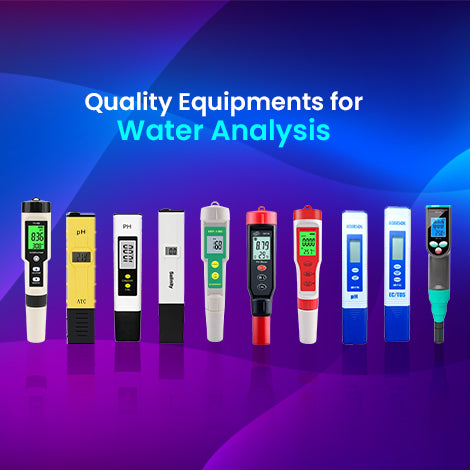ORP Meter-169E
The ORP Meter-169E is a reliable and accurate device designed to measure Oxidation-Reduction Potential (ORP) in water. It is particularly ideal for use in laboratories, industrial applications, and water treatment systems. As a result, this portable meter ensures consistent monitoring of water quality, which is crucial for maintaining the desired chemical balance. Consequently, it helps to prevent potential water quality issues.
Key Features ORP Meter:
- Highly accurate ORP readings with a wide measurement range. However his feature ensures precise data for assessing water quality, which is essential for effective treatment processes.
- Digital display for quick and easy result interpretation. As a result, users can easily read and understand the data without confusion, even in challenging environments.
- Compact and lightweight design for portability. Therefore, you can conveniently carry the meter to various locations, making it a versatile tool for on-the-go testing.
- Simple calibration for consistent performance. This in fact feature ensures reliable results over time, which is critical for long-term monitoring projects.
- Ideal for various applications, including pools, aquariums, and water treatment plants. Thus, it provides a flexible solution for different sectors requiring water quality monitoring.
Specifications of this ORP Meter:
| Parameter |
Details |
| ORP Range |
-1999 mV to +1999 mV |
| Resolution |
1 mV |
| Accuracy |
±5 mV |
| Power Supply |
2 x 1.5V button batteries |
| Dimensions |
155 mm x 31 mm x 20 mm |
| Weight |
50 g |
Applications:
- Monitoring ORP levels in water treatment plants. This is essential to ensure that the water is properly treated and meets required standards.
- Ensuring optimal water quality in swimming pools and spas. Therefore, it helps maintain a balanced chemical environment, contributing to the safety and comfort of swimmers.
- Maintaining chemical balance in aquariums. As a result, it contributes to the overall health and well-being of aquatic life, promoting a stable ecosystem.
- Testing the effectiveness of water filtration systems. This is important to verify if the system is performing as expected and whether it is improving water quality.
- Industrial applications requiring precise ORP measurements. Consequently, it helps maintain strict water quality standards in various industrial processes, from manufacturing to cooling systems.
How to Use the ORP Meter-169E:
- Turn on the meter by pressing the power button. Once the meter is powered on, it will be ready for use.
- Immerse the sensor in the water sample up to the marked level. This ensures that the sensor is submerged to the correct depth for accurate measurements.
- Wait for the reading to stabilize on the digital display. Once stabilized, the reading will be consistent and reliable.
- Note the ORP value and compare it with the desired range for your application. By doing so, you can determine whether adjustments are necessary to maintain optimal water conditions.
- Rinse the sensor with distilled water after use and store it properly. This step is crucial to prevent contamination and maintain the sensor's accuracy over time.
Hence this ORP Meter-169E is an essential tool for ensuring water safety and quality. Thanks to its ease of use and high precision, it has become the preferred choice for both professionals and hobbyists alike. Moreover, its affordability and portability make it an excellent option for a wide range of applications.
For further details and additional products, feel free to visit IndiaMART or Uniglobal Business.












